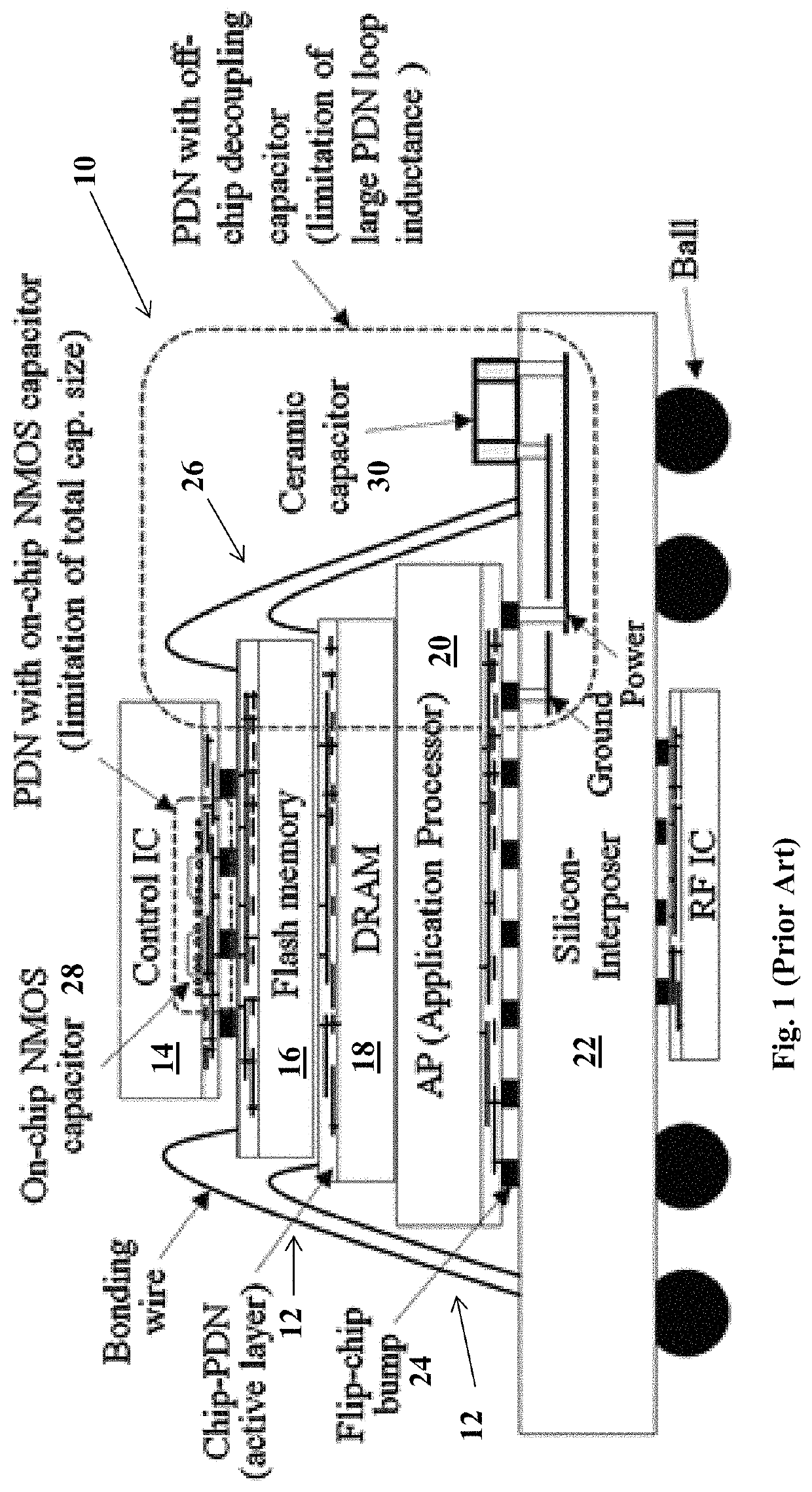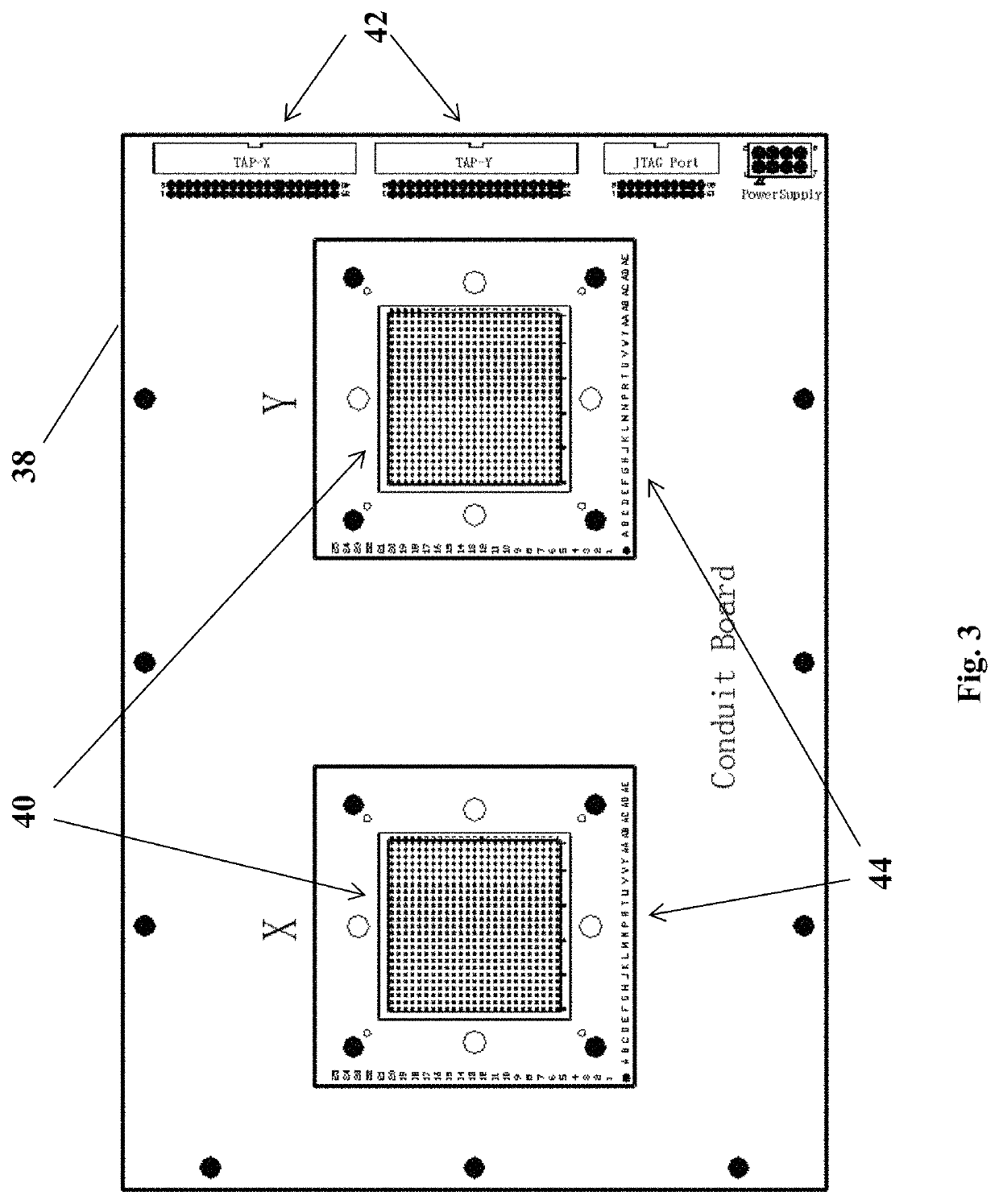Method of and an arrangement for analyzing manufacturing defects of multi-chip modules made without known good die
a technology of manufacturing defects and multi-chip modules, applied in the direction of electronic circuit testing, measurement devices, instruments, etc., can solve the problems of inability to cost-effectively streamline the mcm manufacturing process, and inability to meet the requirements of jtag compliant devices. to achieve the effect of eliminating guesswork
- Summary
- Abstract
- Description
- Claims
- Application Information
AI Technical Summary
Benefits of technology
Problems solved by technology
Method used
Image
Examples
Embodiment Construction
[0058]FIG. 1 shows an exemplary 3D architecture of a multi-chip module (MCM) 10 having a plurality of dice 12 stacked atop each other: a control integrated circuit (IC) 14, a Flash memory 16, a dynamic random-access memory (DRAM) 18, and an Application Processor (AP) 20, all of which sit atop a silicon interposer 22 via flip-chip bumping 24. Wire bonding 26 may be used to selectively connect these dice and discrete components such as, for example, N-type metal-oxide-semiconductor (NMOS) 28 or ceramic capacitors 30. The 3D architecture design also contemplates stacked dice and / or stacked memories selectively placed across and interconnected to each other through the silicon interposer for signal communications as well as grounding and power. This entire assembly may be flip-chip mounted onto a package substrate, preferably made of polyimide having a high dielectric constant, and housed in a suitable package (which may be referred to as a Ball Grid Array (BGA) package). Designers of S...
PUM
 Login to View More
Login to View More Abstract
Description
Claims
Application Information
 Login to View More
Login to View More - R&D
- Intellectual Property
- Life Sciences
- Materials
- Tech Scout
- Unparalleled Data Quality
- Higher Quality Content
- 60% Fewer Hallucinations
Browse by: Latest US Patents, China's latest patents, Technical Efficacy Thesaurus, Application Domain, Technology Topic, Popular Technical Reports.
© 2025 PatSnap. All rights reserved.Legal|Privacy policy|Modern Slavery Act Transparency Statement|Sitemap|About US| Contact US: help@patsnap.com



